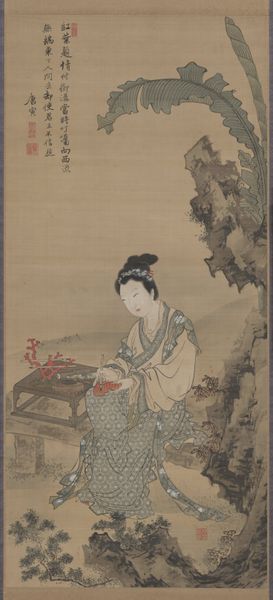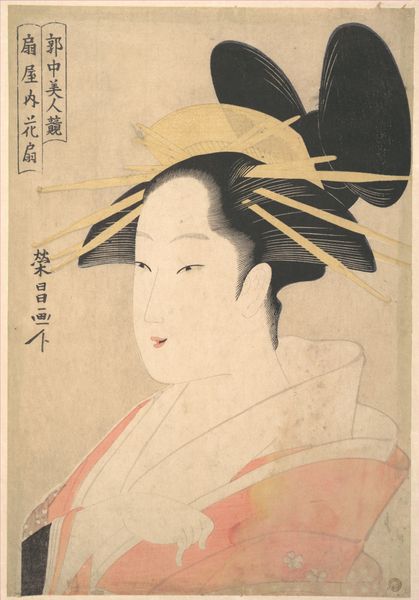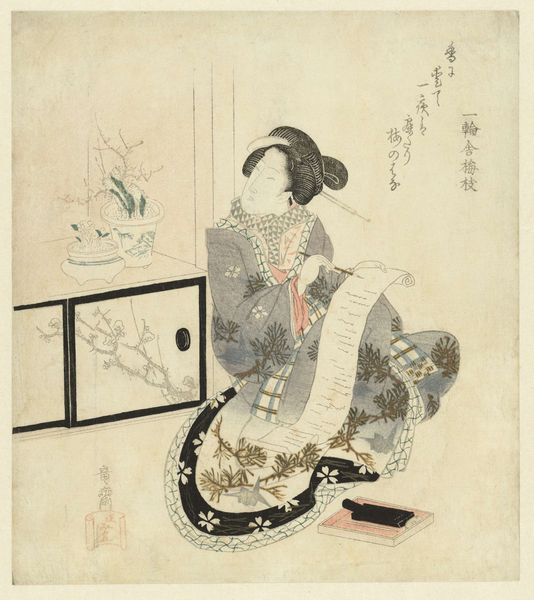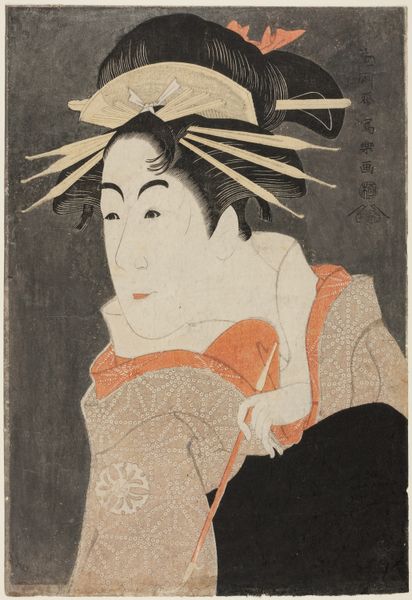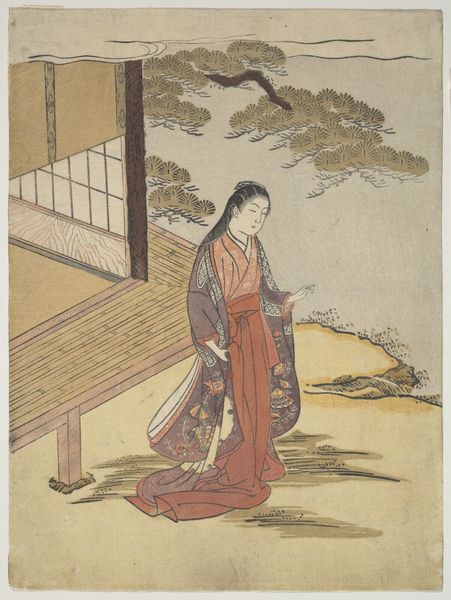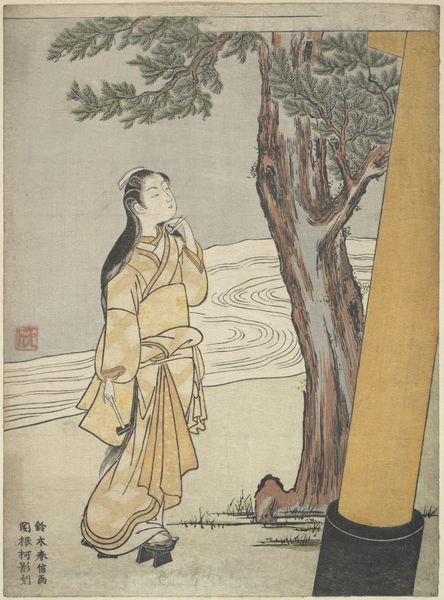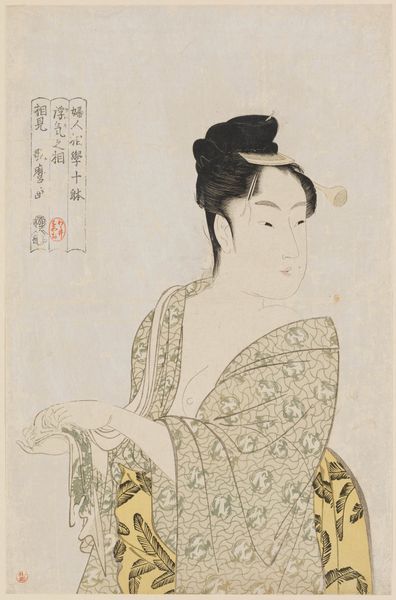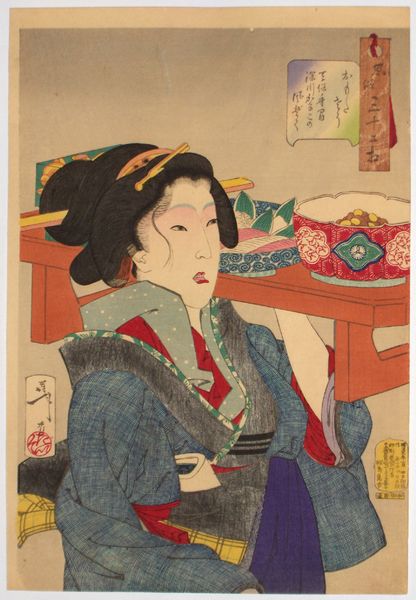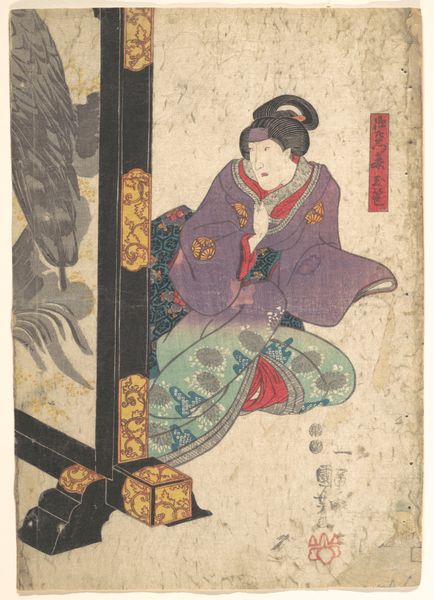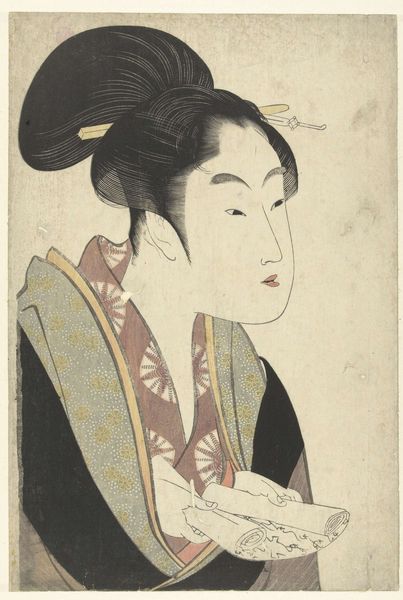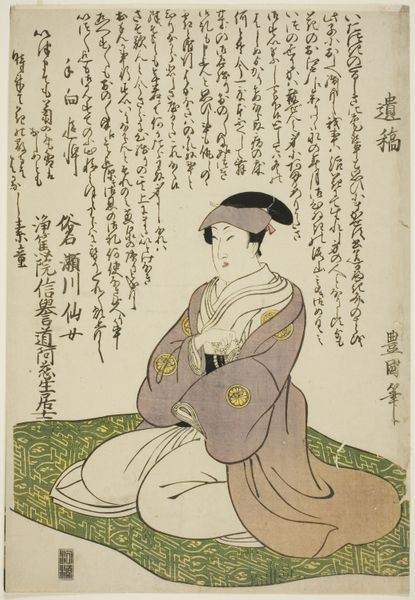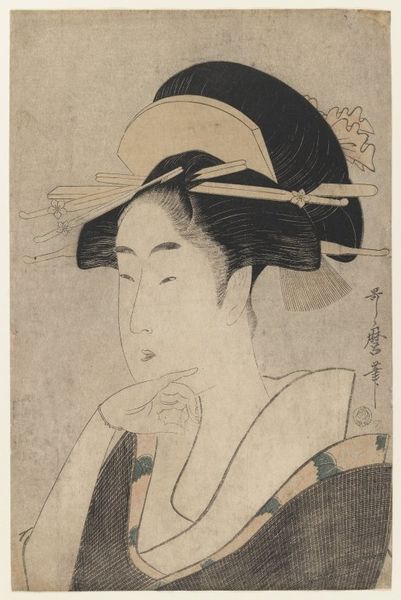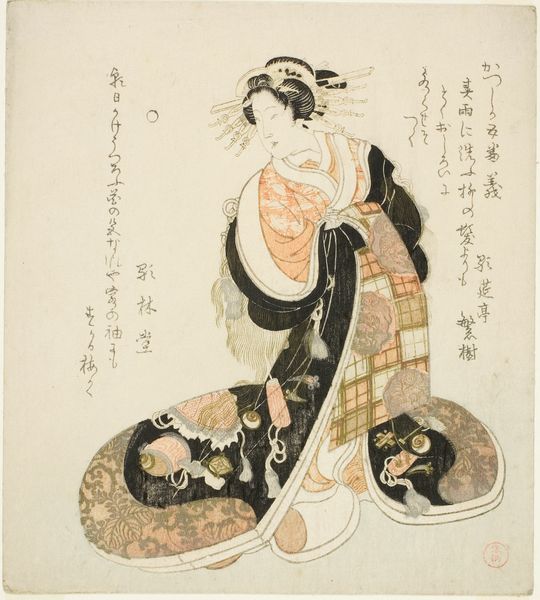
painting, paper, watercolor, hanging-scroll
portrait
painting
asian-art
figuration
paper
oil painting
watercolor
hanging-scroll
genre-painting
watercolor
Dimensions: 65 1/4 × 29 15/16 in. (165.7 × 76 cm) (image)101 3/16 × 39 in. (257 × 99.1 cm) (overall, without roller)105 × 43 1/4 in. (266.7 × 109.9 cm) (mount, with roller)
Copyright: Public Domain
Editor: This is "The Singer Su Xiaoxiao," painted by Kang Tao in 1746. It's a hanging scroll, done in ink and color on paper. There's such a sense of melancholy and quiet in this piece, I'm intrigued by how the artist captured it. What stands out to you when you look at this painting? Curator: The most striking thing to me is how Kang Tao uses visual symbols to construct a narrative about Su Xiaoxiao. We see a figure, clearly a woman, seated in a landscape, and immediately certain connotations arise. What do you think the landscape setting might suggest about her? Editor: Perhaps she is a free spirit, connected to nature and the wider world? Curator: Precisely! The natural setting, in contrast to an opulent interior, immediately detaches her from the rigid social structures and expectations often imposed on women, especially in art. She is associated with a romantic ideal. Note, too, how the artist places calligraphy inscriptions above the figure. Consider that each stroke, each carefully chosen character, adds to our understanding of her essence. It’s not merely descriptive but symbolic. What feelings do these elements evoke when considered as a whole? Editor: There’s a sense of longing, maybe even a bit of defiance, communicated through her calm expression against this detailed backdrop. The symbolism is rich, contributing depth to the historical narrative and making her timeless. Curator: Exactly. Through these artistic choices, the artist transcends a simple portrait, crafting an image resonant with enduring themes. Editor: Thinking about the painting this way definitely changes how I view portraits in general. Curator: I'm glad you noticed that, I too learned new insights during our conversation.
Comments
The Hangzhou artist Kang Tao (active 1700s) rarely painted actual individuals; he more often produced images of Daoist immortals and earthly beauties. In this case, however, he rose above the norm and produced a beautiful, technically refined, sympathetic depiction of Su Xiaoxiao, a famous singer who lived around 400–500 CE. She is shown sitting pensively in a garden, on a large rock amid low clusters of frozen bamboo. The painting bears a 1746 poem by the painter, a colophon by the poet-painter, Qian Du (1763–1844) dated 1813, and two colophons by the great literatus Ruan Yuan (1764–1849), written on consecutive days in 1843. All four poetic colophons carry literary allusions and draw from ancient poetry. Kang’s short poem reads: She is not grieving for autumn now, nor moved by spring.The silken fan back in its box, a new one’s in his hand.As fragrant breezes bring contentment, the “metal wind” now fades.In this world, can anyone plumb the truth of her heart' The poem describes Xiaoxiao as an aging beauty who is saddened not by seasonal change or frozen bamboo, but rather because, like a fan put back in its box when no longer needed, she has been put aside by her lover for a new and younger woman. But seated here, she notices that the pleasant spring breezes have begun to replace the chilling winds of the season of metal (autumn), and her pure heart begins to heal.
Join the conversation
Join millions of artists and users on Artera today and experience the ultimate creative platform.
